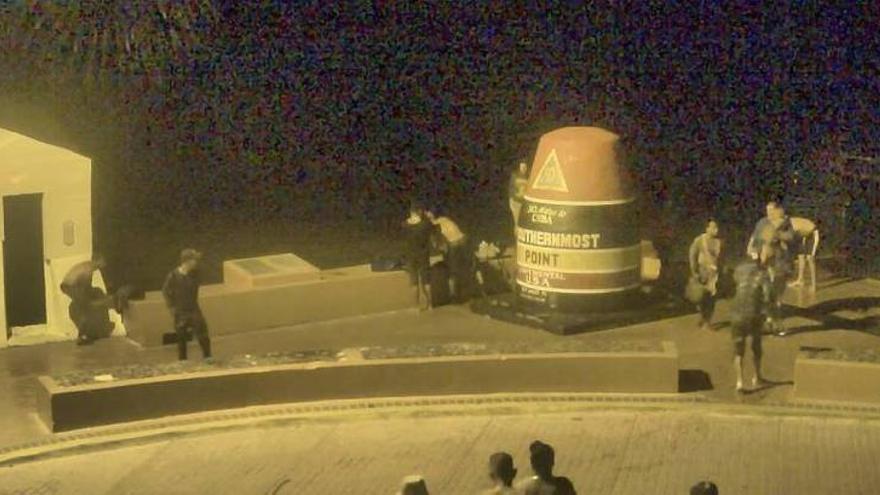
14ymedio, Havana, July 17, 2020 – A group of 31 Cuban balseros (rafters) arrived at dawn on Thursday on the coast of Cayo Hueso, Florida, according to local media reports. A short while after their arrival, authorities announced the arrest of 20 of them in Miami.
According to the migratory agreement signed under Barack Obama’s administration with the Cuban Government, the migrants will be returned to Cuba.
“Twenty Cuban migrants were arrested in the Miami sector,” John R. Modlin, the head agent of U.S. Customs and Border Protection, said on Twitter.
“The migrants were exposed to extreme temperatures in an overloaded, homemade boat without safety equipment. This type of trip from Cuba, it’s dangerous!” he added.
The landing was filmed by a couple who, in an interview with America TV, explained that they were shocked to see a mother holding a child among the rafters.
Junior Ramos and Katherine Molina were the young people who filmed the arrival, and according to what the migrants told them, it took one and a half days to get there from Cuba.
“We two were there and welcomed them to a free nation,” said Ramos. The couple confessed that the event would mark them “for life.”
According to official data, so far for fiscal 2020 (which began in October), 96 Cubans have been intercepted on the high seas. In 2019, a total of 481 immigrants from the Island were captured on the journey.
In 2017, Obama eliminated the policy of “wet foot, dry foot,”,which allowed Cubans who set foot on land to be admitted as refugees, with an expedited path to permanent residence.
Before the end of the “wet foot, dry foot” policy, in 2016, the U.S. Coast Guard counted the arrival of 1,845 rafters. In 2007, another tense year for U.S.-Cuba relations, the number reached 4,161.
The Cuban Adjustment Act, still in effect, allows for the regularization of migratory status for Cubans after one year of residence in the U.S., but it requires that they be admitted legally at the border. If they’ve arrived illegally by sea, they can’t invoke this rule. However, not all legal routes are closed, Alejandro Vázquez, an immigration attorney, told the Nuevo Herald.
“Immigrants who arrive by sea and aren’t detained can request asylum like anyone else,” he said.
The lawyer assured that even those Cubans who are detained upon arrival and show credible fear of returning to the Island can be released under personal recognizance or bail, pending an asylum trial, or remain detained pending a repatriation trial.
Translated by Regina Anavy
____________
COLLABORATE WITH OUR WORK: The 14ymedio team is committed to practicing serious journalism that reflects Cuba’s reality in all its depth. Thank you for joining us on this long journey. We invite you to continue supporting us by becoming a member of 14ymedio now. Together we can continue transforming journalism in Cuba.
